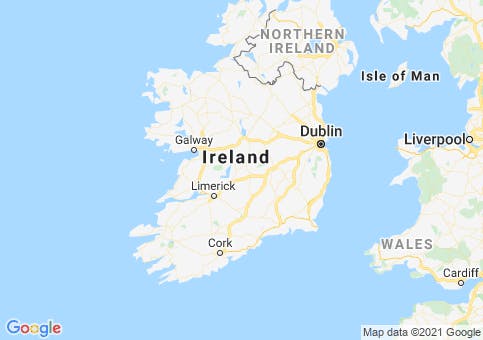Whether you dream of a cozy cottage in the countryside or a townhouse in one of Ireland’s charming coastal villages, it all starts with the right visa.
Ireland offers several pathways to legal, long-term residency, including options tailored for retirees, entrepreneurs, and those joining family members. But while the country is famously welcoming, its visa system isn’t exactly straightforward. Understanding your options and how they align with your long-term goal is the key to making your move a success.
To help you make sense of it all, we’ve broken down the most common visa types below—what they allow, who they suit, and what to expect.
Your chance to retire overseas now
Your chance to retire overseas now
Learn more about Ireland and other destinations by signing up to our daily IL Postcards e-letter and we'll immediately send you a free report: 20 Countries Compared, Contrasted, Ranked, and Rated.
You don’t have to be rich to enjoy a pampered retirement, you just need to know where to go.
With our 34th Annual Global Retirement Index, our experts hand you a detailed roadmap. Details and a Special Offer Here!

By submitting your email address, you will receive a free subscription to IL Postcards, Overseas Dream Home, The Untourist Daily and special offers from International Living and our affiliates. You can unsubscribe at any time, and we encourage you to read more about our Privacy Policy.
Overview of Irish Residency Options
Ireland’s immigration system revolves around permission “stamps” placed in your passport/identity card, each with different rights and whether time on that permission (“reckonable residence”) counts toward citizenship, or toward a Stamp 5 permanent residence called WCATT—Without Condition as to Time.
The most relevant pathways are:
Financially independent Stamp 0
The Start-Up Entrepreneur Programme (STEP) to Stamp 4
Volunteer permission on Stamp 3
Family routes: Stamp 4 or Stamp 0, depending on eligibility
Now let’s look at each route in turn.
People of Independent Means—Stamp 0
Stamp 0 is available to US nationals of independent means who wish to retire in Ireland and can fully support themselves. There are two financial requirements: You must have a passive income of at least €50,000 per year per person. That means a retired couple would need €100,000.
You must have access to a lump sum for emergencies and contingencies. Irish Government guidance says this is normally equal to the average price of a residential dwelling in Ireland. Finances must be certified by an Irish accountancy firm. Private medical insurance is required. People living on Stamp 0 have no access to Irish public benefits such as the National Health System.
Tax implications
Retirees who become tax residents are taxed under ordinary Irish rules; non-domiciles (nom-doms) may use the remittance basis for foreign income/gains.
Does it lead to permanent residence or citizenship?
Stamp 0 is not listed as a “reckonable” stamp and, as a rule, does not lead to Stamp 5 permanent residence or citizenship.
Start-Up Entrepreneur Programme (STEP)—Stamp 4
Non-EEA nationals who have founded a High-Potential Start-Up (HPSU) in Ireland and have €50,000 in secured funding are eligible. The business must be innovative, internationally scalable, and headed by an experienced team. Retail/personal services/hospitality are generally not eligible. Family members are eligible to join the main applicant.
Stamp 4 gives permission for two years of residence; it can be renewed for three more years, subject to business viability and other conditions (private health insurance, good character). After five years of residence, participants are eligible for long-term residence. No special tax concessions are included—standard Irish tax rules apply.
Tax implications
Normal resident taxation applies.
Does it lead to permanent residence or citizenship?
Yes, time on Stamp 4 is reckonable for citizenship. After eight years on qualifying stamps, you may apply for Stamp 5; after nine years total residence—including one continuous year before application—you may apply for citizenship.
Volunteering in Ireland—Stamp 3
This is for US nationals who have an offer to volunteer with an eligible organisation for more than 90 days. The scheme allows an initial one-year stay, extendable up to two years (and possibly a third year), subject to conditions. Stamp 3 doesn’t allow employment or self-employment.
Tax implications
Volunteers are typically not working (so no Irish employment income). If you meet the days-based tax residence tests, ordinary resident/non-dom rules apply to any other income.
Does it lead to permanent residence or citizenship?
On its own, this is not a direct settlement route and is time-limited. However, Stamp 3 time is reckonable toward citizenship and can count toward Stamp 5 once you accumulate eight years across eligible permissions.
In practice, volunteers who intend to settle usually transition to another qualifying permission before reaching eight years. (See the section below on pathways to citizenship.)
Elderly Dependent Relative of an Irish Citizen—Stamp 0
Elderly dependent parent(s) of an Irish citizen (or certain residents) may live with them in Ireland in exceptional circumstances. There are strict financial thresholds for the Irish sponsor, who must demonstrate “continuous and consistent” income after tax of €60,000 per year (for one parent) or €75,000 per year (for both parents) for each of the prior three years, plus evidence of dependency and lack of state burden. This status requires being fully self-sufficient with private medical insurance and no recourse to public funds.
Tax implications
If you meet the residence day tests, you’ll be an Irish tax resident; if non-domiciled, foreign income/gains are taxed only on remittance.
Does it lead to permanent residence or citizenship?
Under the policy governing this route, Stamp 0 for dependent parents is not reckonable for long-term residence or naturalization. It is a renewable status, not a settlement route.
What Counts Toward Citizenship and “Permanent Residence” In Ireland?
All stamps are reckonable for naturalization except Stamp 0. For US nationals, you need five years of reckonable residence in the last nine, including 1,826 days total and one continuous year immediately before applying.
“Permanent residence” in Ireland
Ireland’s closest equivalent to indefinite leave to remain is Stamp 5 (WCATT).
You may apply once you reach eight years (96 months) of legal residence on eligible stamps, provided you’re of good character and not an undue burden on the State.
Quick Route-by-Route Summary
| Route | Typical Stamp | Can Work? | Counts For Citizenship? | Stamp 5 Possible? | Core Financials |
| Elderly Dependent Relative | Stamp 0 | No | No (per policy) | No | Sponsor after-tax income €60k/€75k per year for prior three years; private insurance; no State funds. |
| Retiree / Independent Means | Stamp 0 | No | No | No | €50k per year per person + lump sum that equals house price; private insurance; no State funds. |
| Step Entrepreneur | Stamp 4 | Yes | Yes | Yes | €50k secured funding; HPSU criteria; two-year initial + three-year renewal. |
| Volunteer | Stamp 3 | No | Yes | Potentially (with eight years total) | Eligible organization;one-year initial, up to two (possibly three) total. |
Notes & Pitfalls
Stamp 0 is intentionally non-settlement: Whether for retirees or elderly dependants, Stamp 0 is designed for self-sufficient residence with no recourse to public funds, and (particularly for dependent relatives) does not count toward settlement/citizenship under policy. If long-term settlement is your goal, target routes that grant Stamp 3/4 and build toward Stamp 5.
Evidence matters for family routes: Spousal and de facto cases are document-heavy (relationship proof, police clearances, financials). Plan for a rigorous examination and allow time.
Citizenship timing: For standard naturalization, you must show five years of reckonable time out of nine, including one continuous year right before applying.
Tax planning: The remittance basis for non-doms is powerful but technical (e.g., what constitutes a “remittance,” treatment of mixed funds, and exceptions). Get professional advice before moving funds.
Bottom Line
Most readers of this report will be thinking in terms of Stamp 0, which is in effect a retirement visa. Stamp 0 grants residency rights in Ireland, but it depends on continuing qualification. It’s not a cheap visa compared to most other European countries, with the annual income required roughly four or five times that of most retirement visa options elsewhere.
The requirement of substantial personal savings as a backstop is also noteworthy. Although some other countries do ask for savings as part of a visa application, Ireland’s is the highest in Europe.
Your chance to retire overseas now
Your chance to retire overseas now
Learn more about Ireland and other destinations by signing up to our daily IL Postcards e-letter and we'll immediately send you a free report: 20 Countries Compared, Contrasted, Ranked, and Rated.
You don’t have to be rich to enjoy a pampered retirement, you just need to know where to go.
With our 34th Annual Global Retirement Index, our experts hand you a detailed roadmap. Details and a Special Offer Here!

By submitting your email address, you will receive a free subscription to IL Postcards, Overseas Dream Home, The Untourist Daily and special offers from International Living and our affiliates. You can unsubscribe at any time, and we encourage you to read more about our Privacy Policy.











